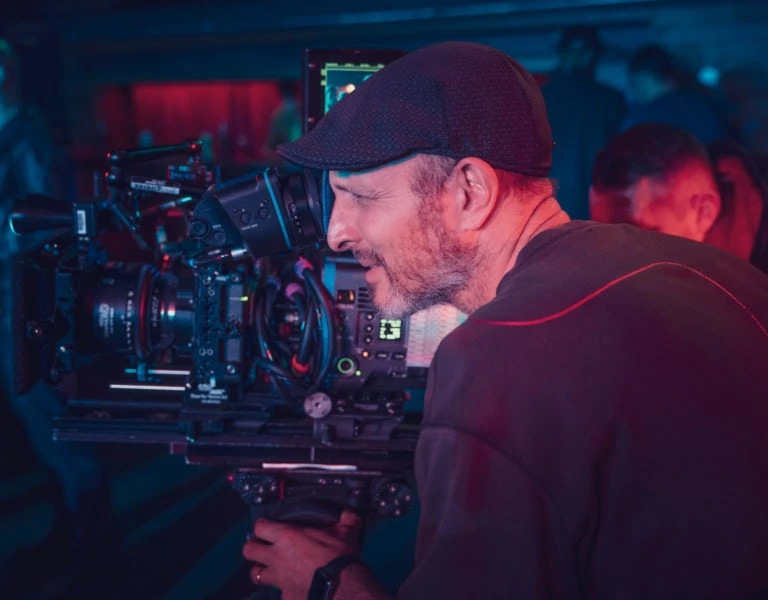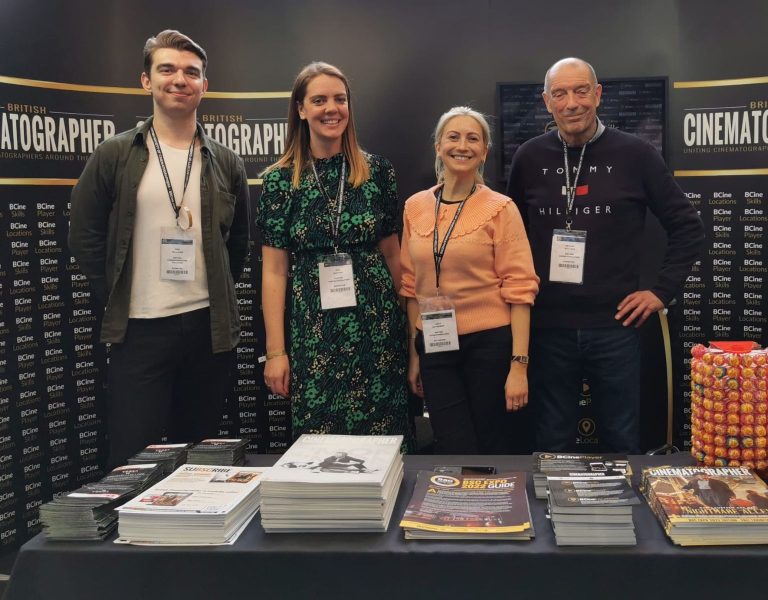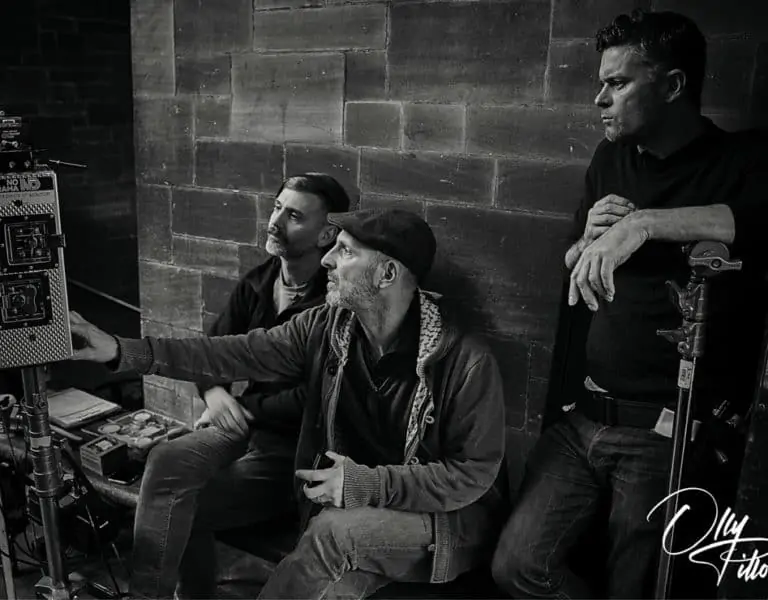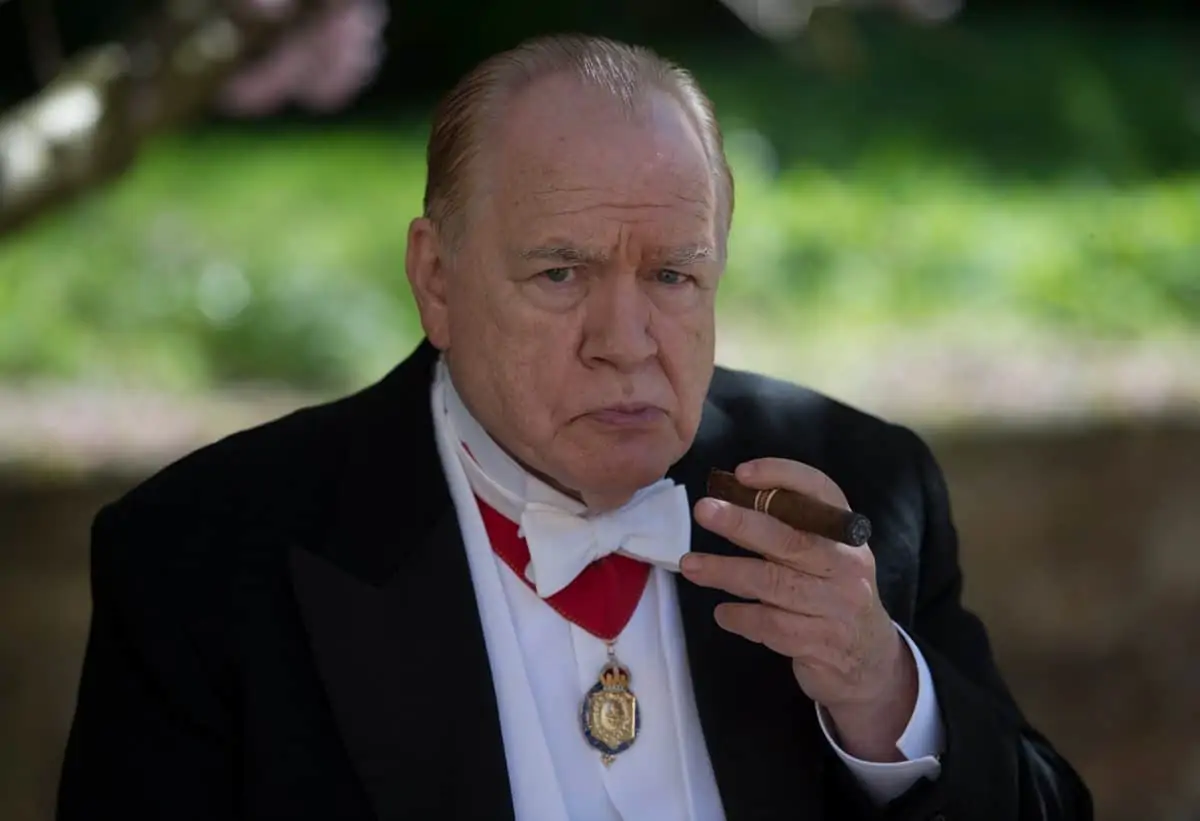LOVE SHINES IN DARKNESS
Cinematographer David Katznelson BSC DFF, drawing on his personal connection as the son of child of a concentration camp survivor, makes The Tattooist of Auschwitz especially poignant.
Even in the darkest of situations love can be found and such is the case with The Tattooist of Auschwitz where amongst the imprisoned at the most notorious Nazi concentration and extermination camp, Slovakian Jew Lale Sokolov meets his wife, Gita Furman.
The Holocaust book authored by Heather Morris has been criticised for inaccuracies which were considered when being adapted into a Historical drama series for Sky Atlantic and Peacock by Synchronicity Films and Sky Studios.

All six episodes were overseen by executive producer Claire Mundell, director Tali Shalom Ezer, production designer Stevie Herbert, and cinematographer David Katznelson BSC DFF who himself is the child of a World War II concentration camp survivor.
The subject matter highlights the difference between perception and reality. Setting a love story within barracks, gas chambers, and crematoriums contrasts with the horrific environment responsible for 1.1 million deaths over five years.
“When I first went to the job interview and read the scripts, I was in the middle of reading another book about Auschwitz which didn’t have that love element to it,” recalls Katznelson. “For me, to all of a sudden read this thing, it felt completely unbelievable. All the way through the production that was a real juxtaposition. How do you portray ‘hell on Earth’ and yet have a love story?” Katznelson’s father was in a concentration camp as a child with his mother and luckily survived.

“I went to Auschwitz for the first time when we did a recce for this production expecting it to always have black clouds over the camp and it was the most glorious autumn day ever,” states Katznelson. “It was so wrong somehow. I had lots of chats with Tali Shalom Ezer about how colour should be in there, referencing Schindler’s List and Son of Saul. Tali was quite keen that there was always some hope in there and because it was a love story we had to have some colour at all times whether it was a muted bit of red or green, otherwise it’s a uniformed world.”
Shooting the six episodes as the sole cinematographer was the equivalent of being responsible for an entire trilogy of films. “It felt like that!” laughs Katznelson. “The shooting schedule was structured around actors’ availability and within that we tried to shoot as much as possible chronologically for everything in the camp, and the same with Melanie Lynskey and Harvey Keitel [who portray Heather Morris and Sokolov].”

On location
A late greenlight to proceed meant that there was not much time devoted to preproduction. “We did storyboards for key scenes and for visual effects purposes because one of the main challenges for us was definitely the camp itself,” says Katznelson.
“Auschwitz has barracks with bricks which were existing buildings that they moved into. Then there’s Auschwitz-Birkenau which is wooden barracks that they built quite quickly over the course of a few years. You could literally walk miles and miles and have these incredibly long avenues. All of the lines are straight and you’ve got these barracks that are 40×10 metres which stack up. It means wherever you look there’s an incredible depth. There’s nothing to close off the depth but you can’t build it because there are 300 to 400 different huts and buildings.”
It’s a story about one man who travels the camp and moves from one section to the next. Katznelson says that had to be storyboarded to find out where to position greenscreens and whether they could rotoscope. There were around nine barracks and visual effects [led by Alan Church and Simon Giles] “multiplied a hell of a lot more”.

Principal photography took place in Slovakia, Austria, and Hungary over four and a half months. “We shot outside of Bratislava in a farmer’s field and literally from scratch built a whole village with a circular road around it where we could move trucks with greenscreens and have our facilities,” explains Katznelson.
“Huge amounts of rain came and buildings started to move! We were trying to do Steadicam moves with the characters and it was so slippery. Major credit to our Steadicam operator Tom Walden who braved the weather.”
A single LUT was utilised which was slightly corrected during shooting and the DI. LiveGrain was applied to emulate 500 ASA 35mm film stock which allowed for some dusty blacks in the shadows. “There is a tiny bit of a bleach bypass plug-in on some of the scenes in the camp that we used in the grade. We also pushed the highlights to blow them a little bit more for the exteriors and to some extent the interiors of Australia with Harvey and Melanie.”

There is a lack of information about the actual lighting conditions at Auschwitz. “What we could see in the remaining bits of the camp was there were a few naked bulbs with cooling shades hanging in some of the rooms,” says Katznelson. “And equally there were these fittings with a glass stone on them. We decided to implement those and have them in sparse numbers inside of the various barracks and locations in the camp. If you want to be true to it you also have to be daring in making it a bit harsh so with my gaffer, Martin Taylor, we decided to not mind it too much if an actor walked up and stood right under a light and it’s really overexposed on one half of the face and very dark on the other side. It was quite interesting to play with these bulbs and the harsh light that you get from them. Mainly we stuck with it and tried to keep it reasonably simple. But sometimes with the women or if we had a close-up we would try to get them to take a step forward so it became a backlight and then they would get a hot rim light.”
Augmentation was unavoidable with a heavy reliance on Creamsource Vortex LEDs. “For the whole exterior camp cables were dug in that ran to every single bulb, LED panel, and crane with lights,” reveals Katznelson. “That was all earmarked before we even started shooting there. Everything was on an iPad and equally when we went back into the studio and had barracks built in there, there were huge soft boxes with LED lights. They were helped along as well with tungsten lights, like 5Ks and 10Ks.”
Cameras were supplied by Vantage Film Prague with the footage being captured Sony RAW SQ X-OCN at 4K. “We used the Sony Venice camera and shot a lot of it at 2500 ASA to get a bit of texture in the image and to allow for those tungsten lights to be sufficient. We shot everything with two cameras and then had a third one which was our Steadicam body. I love the fact that there is the Rialto mode which meant we could have a small camera within the barracks.”

The anamorphic lens package included Hawk C-Series, V-Series, and V-Plus Zooms, spherically supplemented by Cooke TLS Speed Panchros Rehoused lenses for night and wide shots.
“We were shooting the Sony Venice full gate and decided to do 16:9 but I still wanted to go with anamorphic lenses to give it more texture,” says Katznelson. “The Hawk C-Series were our workhouse for this, mainly the 50mm and 60mm. The sphericals were our get out of jail lenses and were used in a number of applications. In episode one, when the family is sitting around the dinner table, there were some candle lights and the anamorphic lenses gave us some quite unpleasant flares so we ended up swapping to the spherical.”
Team effort
Other key crew members were key grip Rasto Slezak, A camera/ Steadicam operators Tom Walden ACO and John Hembrough ACO, B camera operator and 2nd unit DP Maros Zilincan ASK, DIT Lubomir Bachraty, and colourist Colin Brown at Blazing Griffin. “There is one shot in episode one where Lale has just been taken to a camp and sits on the back of a lorry,” says Katznelson.
“They travel through the countryside between the two different camps. The camera starts on the back of his head and eventually turns around after 20 to 25 seconds; that is a direct reference to Stalker by Andrei Tarkovsky.” The camera is not always in motion. “Every time Lale moves between different places in the camp we move with him. When it’s very still that’s when the Roy Andersson references come in. You could nearly call them paintings where Tali would setup a shot and would want every single bit to work in that one shot.”

Characters from the past blend with current surroundings, emphasising Sokolov’s feeling that past events feel fresh.
“It was Tali’s notion that although 60 years have passed it’s with him every single day,” says Katznelson. “Hence these ghosts from the past turning up and haunting him in his flat.” Two different visual sensibilities came together. “You have the Tali world of Russian 1960s cinema with three-minute-long tracking shots and then you’ve got the modern day-broadcast viewer. Those two worlds have merged well together. It’s something I’m proud of which still retains a little bit of the arthouse element where hopefully you have a slower pace and shots that aren’t cut, but you are allowed to dwell and take it in.”










